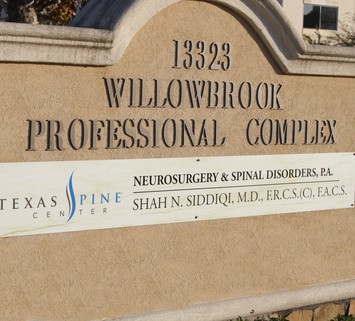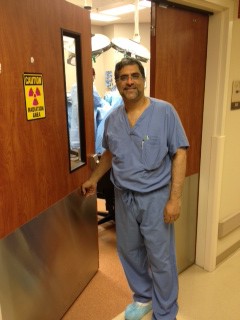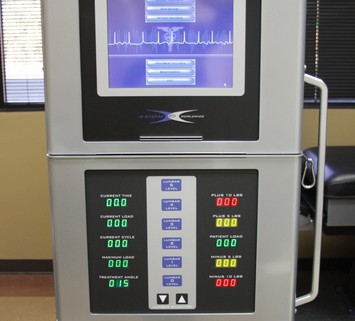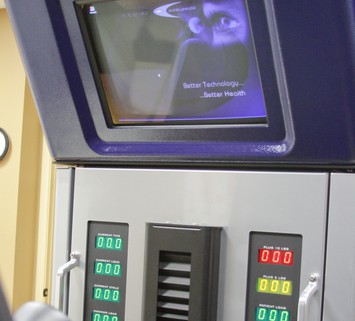Percutaneous discectomy procedures are rewriting how we address disc-related issues that cause back and neck pain. This minimally invasive procedure changes the game, offering a more precise and efficient way to treat problems without the traditional complexities of surgery. Join us on a journey through the basics of this groundbreaking procedure as we answer the questions, “What is a percutaneous discectomy?” and “How does it shape the future of spinal wellness with its simplicity and patient-friendly approach?”
Understanding Percutaneous Discectomies
A percutaneous discectomy is a minimally invasive surgical procedure designed to address issues within the intervertebral discs, the cushions between the vertebrae that act as shock absorbers for the spine. This procedure primarily targets herniated discs, slipped discs, or bulging discs, where the inner gel-like material (nucleus pulposus) leaks out, causing disc compression on nearby nerves and resulting in pain and discomfort.
During a percutaneous discectomy, the surgeon accesses the affected disc through a tiny incision, typically less than one centimeter. Guided by fluoroscopy or imaging technology, specialized instruments are introduced to remove or shrink the herniated disc material, relieving pressure on the nerves and alleviating associated symptoms. Unlike traditional open surgeries that involve significant incisions and tissue disruption, percutaneous discectomies employ a less invasive approach, minimizing trauma to surrounding structures. The term "percutaneous" refers to the procedure performed through the skin without large incisions.
Who Qualifies for a Percutaneous Discectomy?
Percutaneous discectomy is typically considered for individuals who have not found relief from conservative treatments such as physical therapy, medications, or injections. The ideal candidate for this procedure is someone experiencing persistent pain, tingling, or weakness in the limbs due to a herniated, slipped, or bulging disc. A thorough evaluation by a spine specialist is crucial to determine whether percutaneous discectomy is the most appropriate course of action based on the individual's specific condition.
Benefits of Minimally Invasive Surgery
One key advantage of a percutaneous discectomy is its classification as a minimally invasive surgery. Compared to traditional open surgeries, minimally invasive procedures offer several benefits, including smaller incisions, reduced blood loss, quicker recovery times, and decreased risk of infection. Using specialized instruments and advanced imaging techniques allows surgeons to precisely target the affected area while minimizing disruption to surrounding tissues. As a result, patients often experience significant pain relief and can return home to their daily activities sooner.
Outcomes of a Percutaneous Discectomy
The outcomes of a percutaneous discectomy can vary from patient to patient, and success depends on factors such as the extent of disc damage and the overall health of the individual. In many cases, patients report significant improvement in symptoms, including reduced pain, increased mobility, and enhanced quality of life. While some may experience immediate relief, others may notice a gradual improvement over several weeks as the body heals.
Risks Associated with Percutaneous Discectomy
While percutaneous discectomy is generally considered a safe and effective procedure, it carries inherent risks, as does any surgery. Potential complications may include infection, bleeding, nerve root damage, or incomplete relief of symptoms. However, the overall risk profile is lower compared to traditional open surgeries. It is crucial for patients to thoroughly discuss these risks with their healthcare provider and ensure they understand the potential benefits and drawbacks before deciding to undergo the procedure.
Post-Operative Care
The success of percutaneous discectomies is not solely dependent on the surgical intervention; post-operative care plays a crucial role in ensuring a smooth recovery. Patients are typically advised to avoid strenuous activities and lifting heavy objects for a specified period following the procedure. Physical therapy may be recommended to help strengthen the spine and improve flexibility. Additionally, adhering to prescribed medications and attending follow-up appointments are essential components of post-operative care to monitor progress and address any concerns that may arise.
Spinal Disc Care at Texas Spine Center
A percutaneous discectomy emerges as a transformative solution for those grappling with the challenges of herniated or bulging spinal discs. As a beacon of hope, this minimally invasive procedure not only targets the root cause of the problem but also offers a host of benefits, including smaller incisions, reduced recovery times, and improved overall outcomes compared to traditional open surgeries. While the decision to undergo such a procedure is a personal one, individuals in the Houston area can find expert guidance and compassionate care at the Texas Spine Center. With a team of skilled professionals dedicated to utilizing cutting-edge techniques and personalized treatment options, Texas Spine Center stands ready to assist those seeking relief from spinal disc issues. If you're local to the Houston area, reach out to Texas Spine Center for comprehensive spine care tailored to your unique needs and a path toward a healthier, pain-free future.



